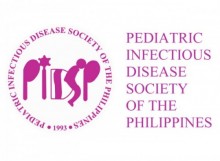Journal 2024 Vol.25 No.1
Clinical Outcomes and Safety of Polymyxin-B-based Combination Therapy in the Treatment of Multidrug Resistant Gram-negative Infections in Pediatric Patients
Kieffer James B. Ferraris, M.D., Cecilia Nelia C. Maramba-Lazarte, M.D.
Abstract
Background: Multidrug-resistant gram-negative (MDR GN) infections pose a significant threat to pediatric health. One of the treatment options in resource-limited settings is polymyxin-based combination therapy. However, evidence on the safety and clinical effectiveness of polymyxin B in children is scarce.
Objectives: This study described the outcomes of mortality, bacteriologic cure and clinical response in pediatric patients with MDR GN infections treated with polymyxin-B-based combination therapy. Adverse drug events (ADE) are likewise described.
Methodology: This is a retrospective descriptive study conducted at the Philippine General Hospital (PGH) among pediatric inpatients from December 2020 to June 2023 with MDR GN infections treated with polymyxin B (PmB), combined with at least one other antibiotic with gram-negative coverage for at least 48 hours. Frequency and rates of the outcomes were measured and analyzed, in relation to the bacterial groups (Enterobacterales, Acinetobacter spp., Pseudomonas aeruginosa) and combination antibiotic regimens used, i.e., meropenem- and fluoroquinolone-containing regimen (PmB+MEM vs PmB+FQ). Frequency of ADEs were measured.
Results: A total of 172 cases in 136 patients were reviewed. The rates for 14-day mortality, failure in bacteriologic cure, and failure in clinical response were 26%, 15%, and 19%, respectively. In Enterobacteralesinfections, PmB+FQ demonstrated lower rates of mortality, failure in bacteriologic cure, and failure in clinical responses. On the other hand, in Acinetobacter infections, PmB+MEM numerically had lower rates for the same outcomes. The Pseudomonas group had conflicting data on which regimen is numerically more favorable overall. No statistically significant differences were found in the outcomes. ADEs noted were tubulopathy (5 cases), anaphylaxis (2 cases), and neurotoxicity (1 case).
Conclusion: Polymyxin-B-based combination therapy appears to be an acceptable treatment option for MDR GN infections in children, especially in settings where novel antibiotics are not accessible. Safety profiles indicate common but manageable adverse effects.
KEYWORDS: polymyxin B, children, multidrug-resistant, gram-negative organisms
https://doi.org/10.56964/pidspj20242501005
| View Full Article in PDF format |
